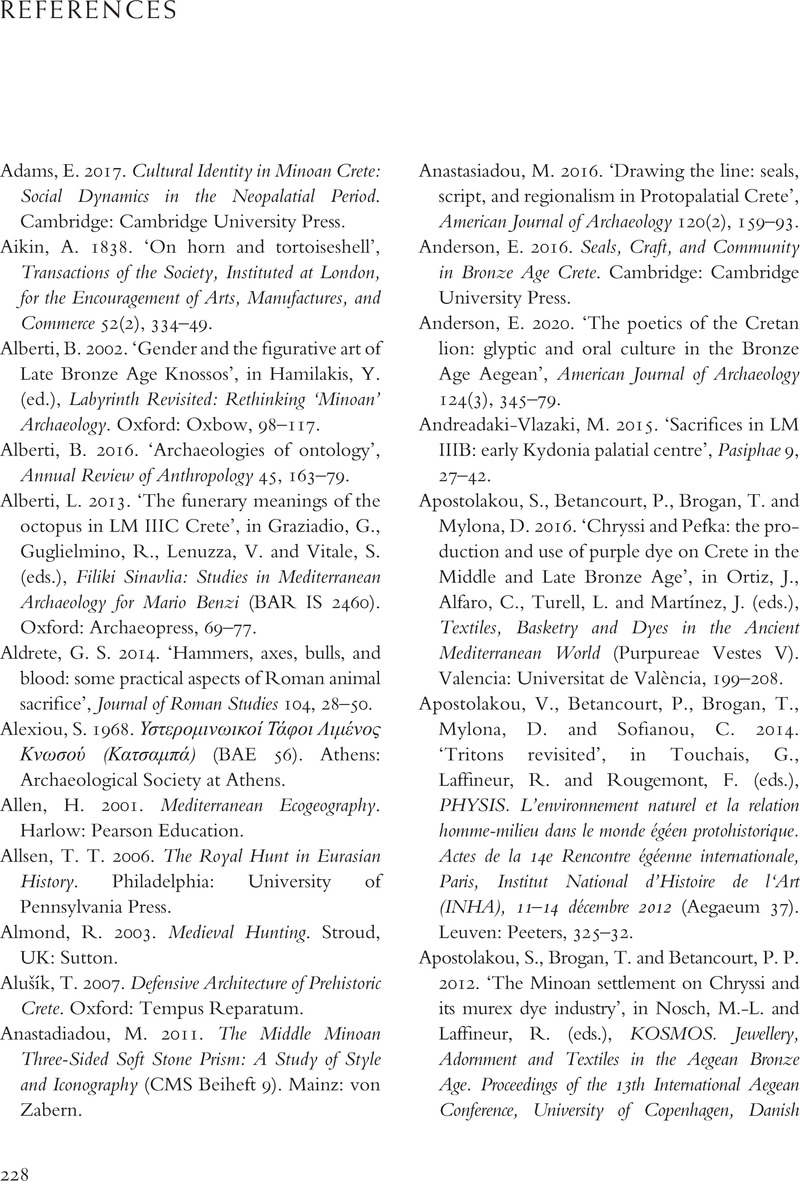Book contents
References
Published online by Cambridge University Press: 28 April 2022
Summary

- Type
- Chapter
- Information
- Human-Animal Relations in Bronze Age CreteA History through Objects, pp. 228 - 268Publisher: Cambridge University PressPrint publication year: 2022



